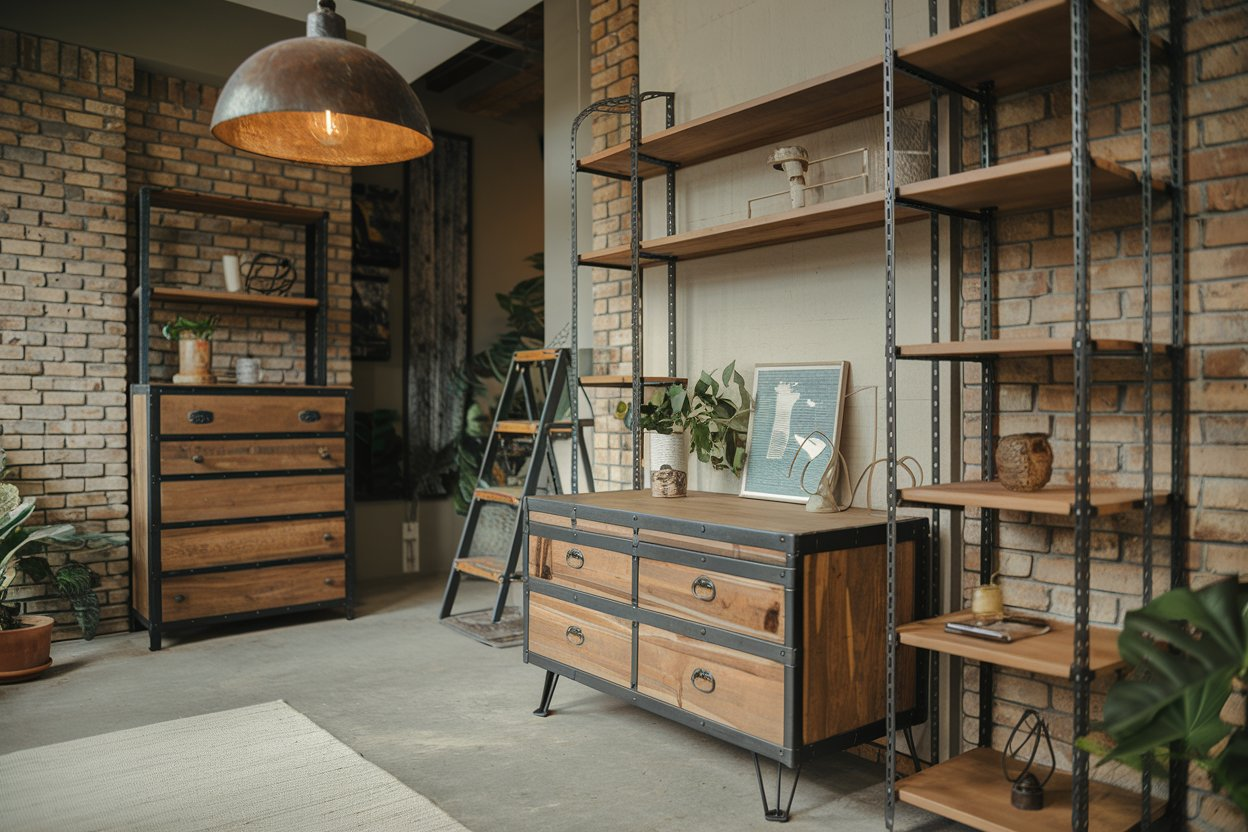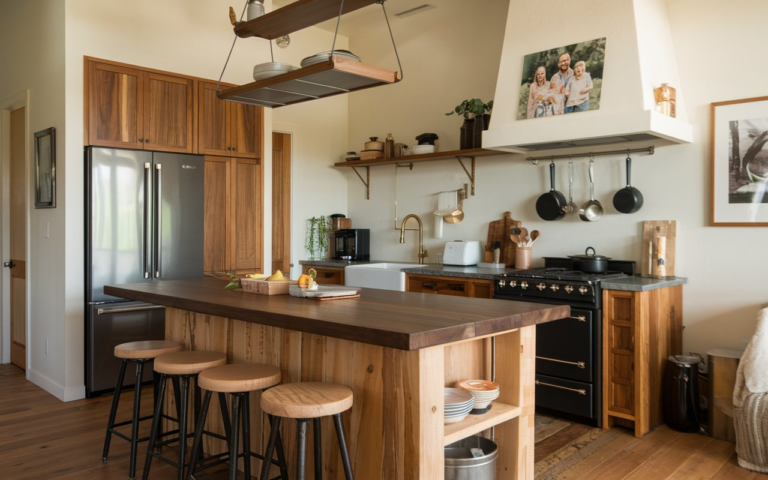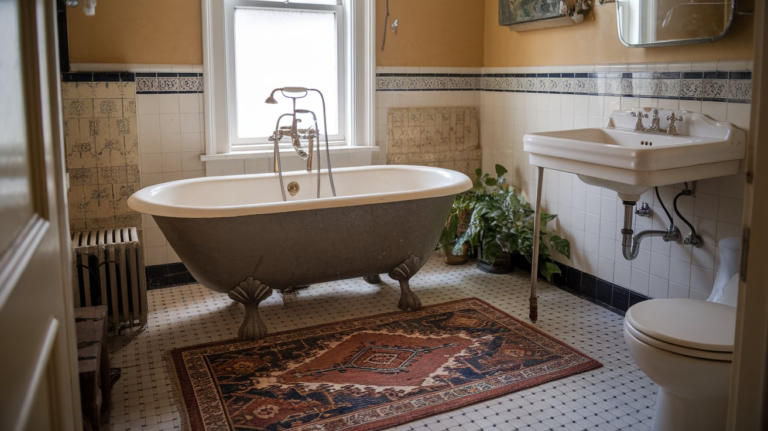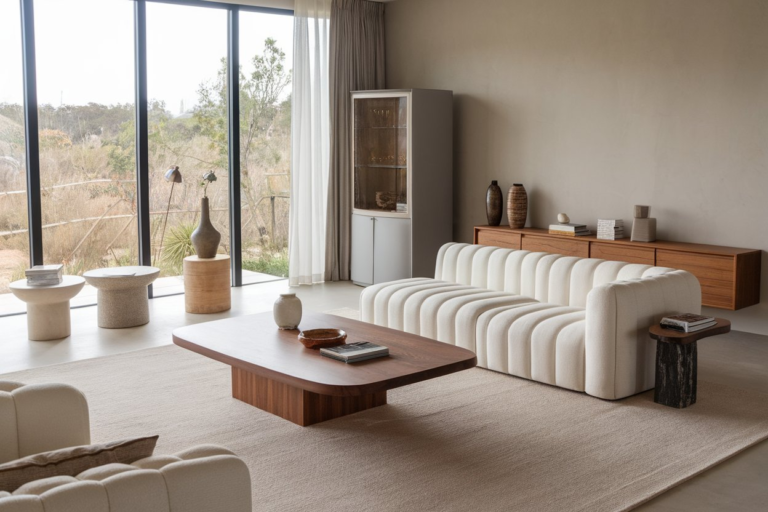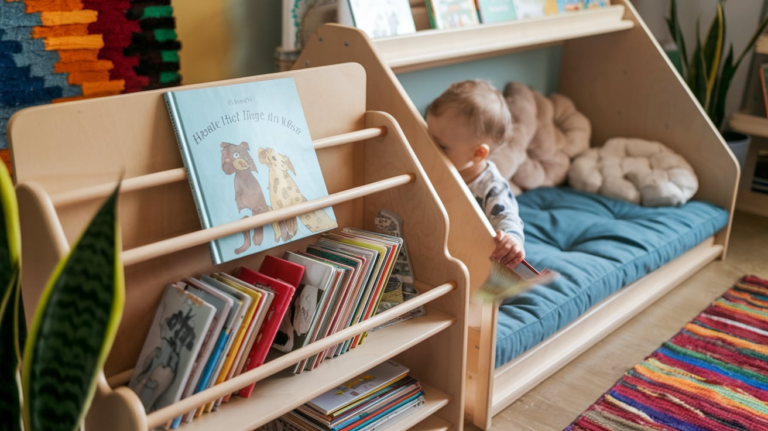21 Industrial Interior Design Ideas: Transform Your Space with Raw Beauty
Industrial interior design is one of those styles that feels both raw and refined. Imagine walking into a space that mixes the rough, unpolished charm of an old factory with the sleek, modern touches of a contemporary home. It’s a blend of contrasts—rustic yet sophisticated, gritty yet stylish.
The industrial design style has gained a lot of popularity over the years for its ability to make spaces feel open, airy, and full of character. Whether you’re working with a loft, a converted warehouse, or just want to infuse your home with an industrial touch, there are plenty of ways to embrace the style and make it your own.
1. Embrace Exposed Brick Walls
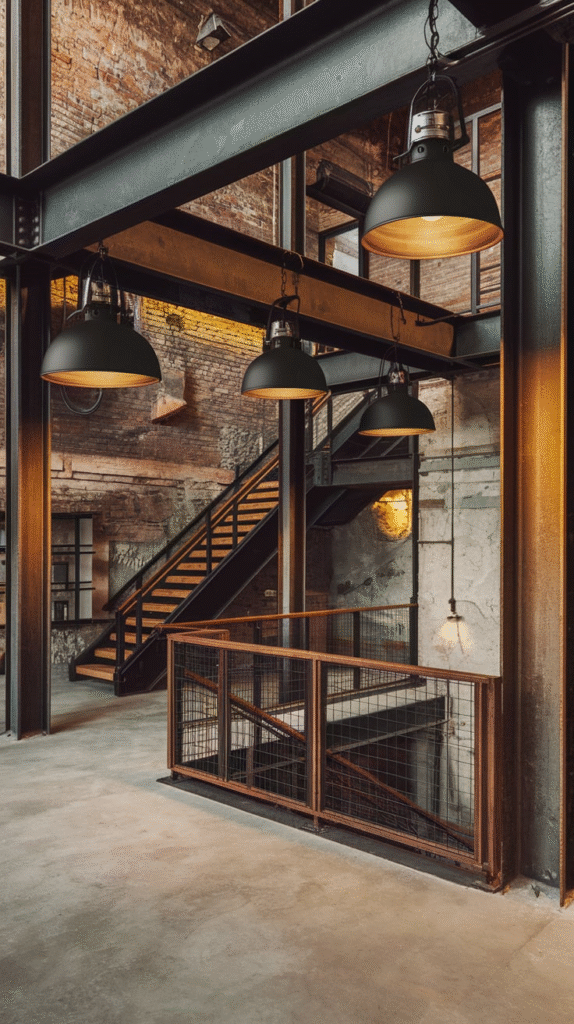
One of the most iconic features of industrial design is exposed brick walls. These bricks have a story to tell—they’re like the fingerprints of a building’s past. They add a sense of warmth and texture to a space that plain walls just can’t match.
The roughness of the brick contrasts beautifully with smoother, more polished materials like glass and steel. If you’re lucky enough to have original brick walls in your space, don’t cover them up! If you’re working with drywall, you can fake it with brick wallpaper or peel-back paneling that mimics the look of real brick.
2. Open, Airy Layouts
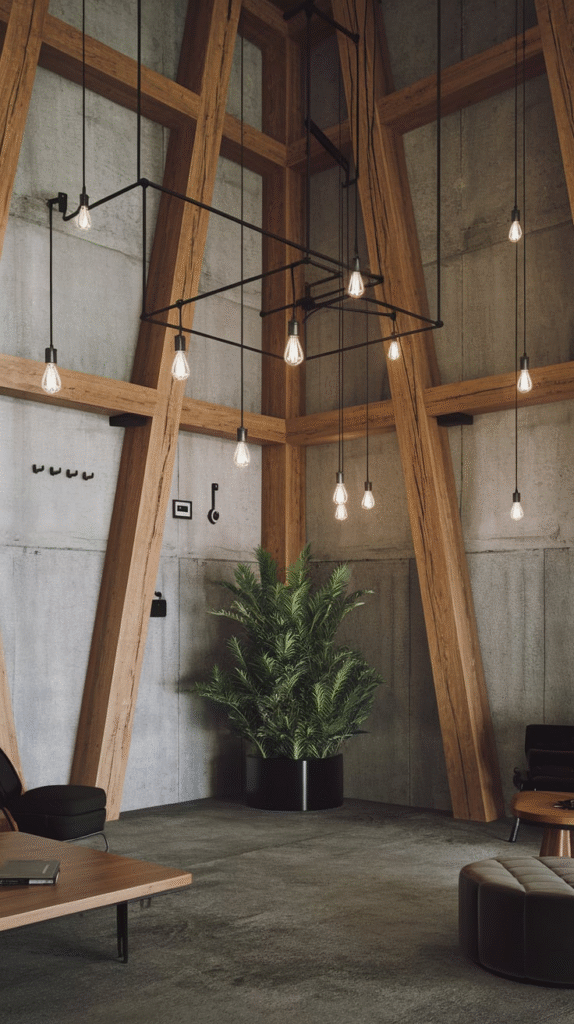
Industrial spaces tend to be open and airy—think lofts, warehouses, and factories that feature vast, uninterrupted spaces. One of the defining elements of industrial interior design is a lack of walls. This doesn’t mean you have to live without privacy, but consider opting for open shelving, glass partitions, or metal-framed screens to create a sense of openness. Minimalistic furniture can help keep the space uncluttered, allowing for fluid movement between areas without feeling cramped.
3. Steel and Iron Accents
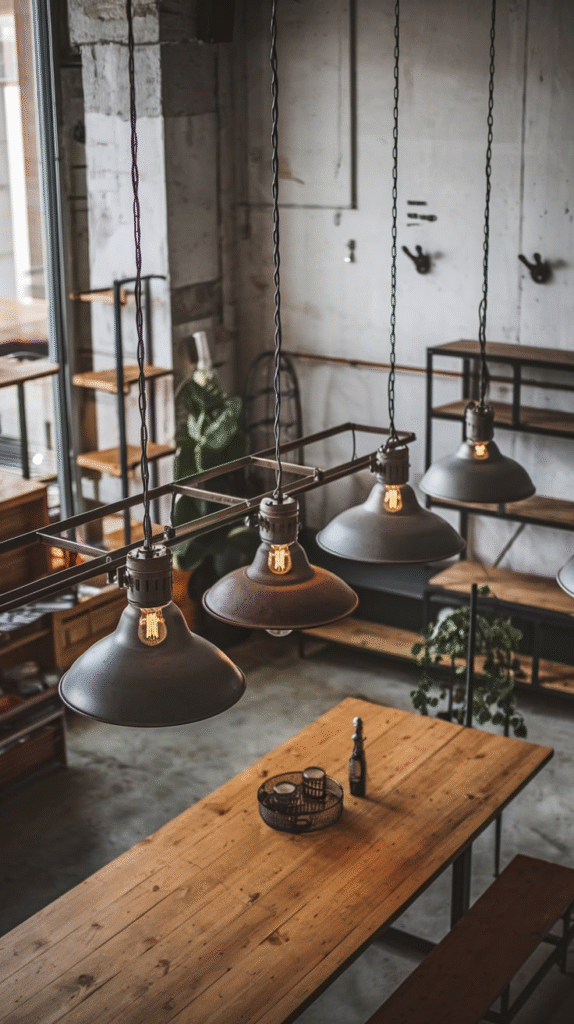
Metal is a huge player in the industrial design world. From steel beams to iron railings, industrial interiors celebrate the beauty of metal in its most basic form. Look for raw metal finishes on your furniture, light fixtures, and even staircases.
Exposed steel pipes can be turned into chic clothing racks or wall hooks. When incorporating metal accents, it’s important to balance them with softer materials like wood or fabric to avoid the space feeling too cold or impersonal.
4. Large Factory Windows

Imagine a space flooded with natural light—large factory windows are an essential part of industrial interior design. These windows not only allow light to pour in but also highlight the raw beauty of the industrial architecture.
If you’re working with a smaller space, you can still get the effect with oversized windows or French doors that open up to an outdoor area. If you can’t install factory windows, floor-to-ceiling windows can give you a similar feel.
5. Statement Lighting with an Industrial Edge
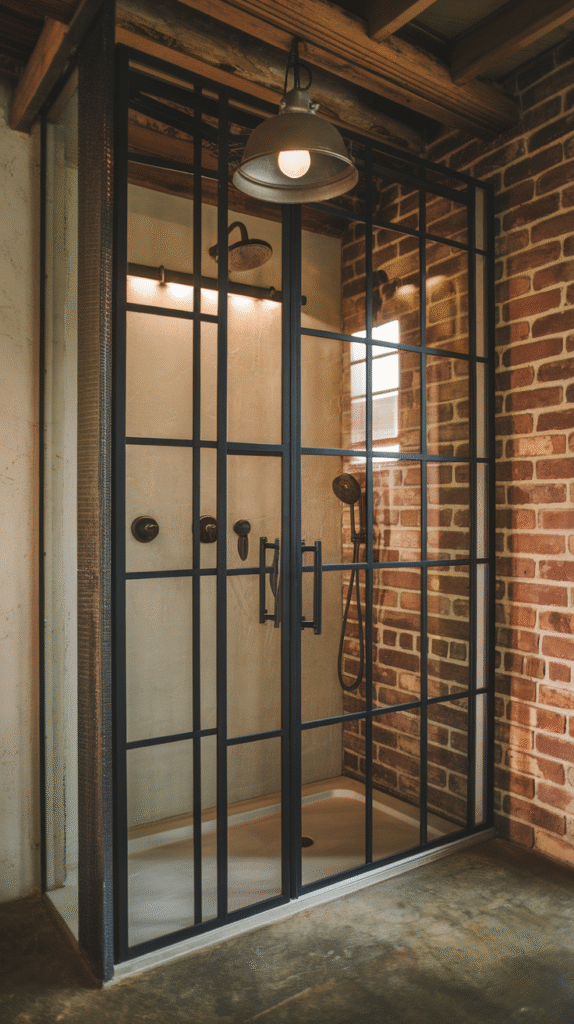
Lighting in industrial design isn’t just functional—it’s also a statement. Think exposed lightbulbs, pendant lights, and vintage-style lamps with visible wires. These fixtures add character to any room.
Edison bulbs are a classic choice, as they create a warm, amber glow that complements the rough textures of industrial materials. Metal lamps with adjustable arms can help you direct light exactly where you need it. The idea is to choose lighting that feels more like a work of art than just a necessity.
6. Use of Concrete
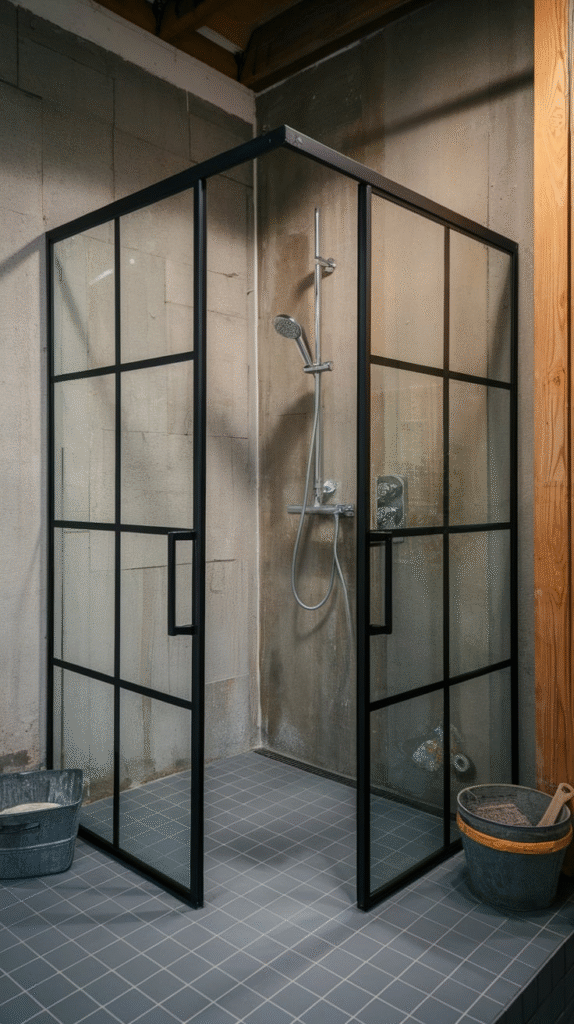
Concrete is another staple of industrial design, providing both texture and strength. Whether it’s on the floor, walls, or as a material for countertops, concrete brings that industrial, factory feel into your home.
Polished concrete floors are sleek and modern, but they can also be treated to have a rougher, more organic finish for a gritty look. You can also incorporate concrete accents into your furniture—think concrete coffee tables or planters.
7. Raw Wooden Furniture
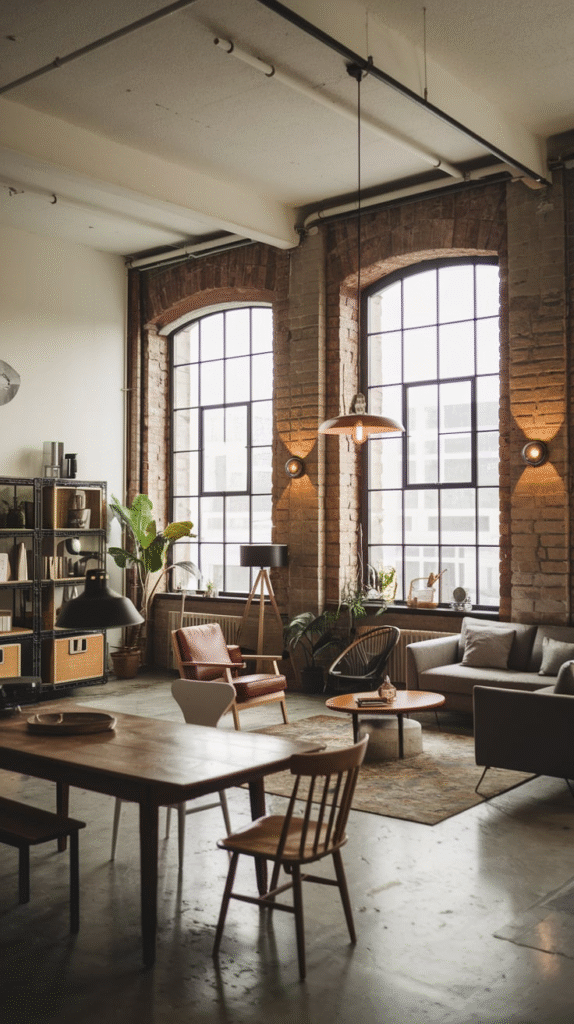
Wood brings warmth to the otherwise stark, metallic, and concrete-heavy industrial style. But to keep it true to the industrial look, opt for raw, unfinished wood rather than polished or glossy finishes. Reclaimed wood tables, shelves, and cabinets give the space a sense of history, as though they’ve been repurposed from another era. The rough textures and imperfections in the wood will contrast beautifully with the harder, colder surfaces in the room.
8. Bold, Oversized Art
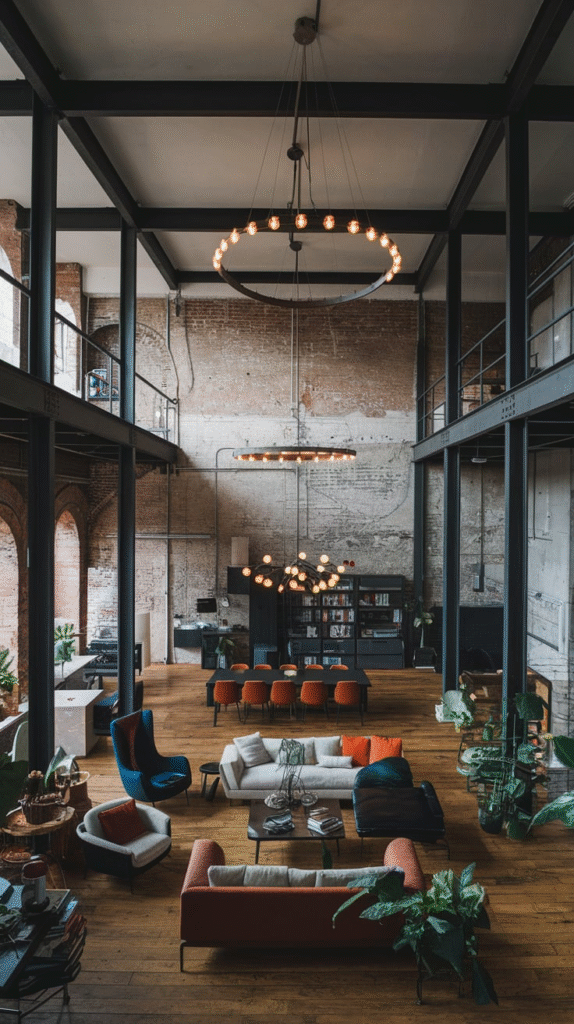
Industrial spaces often have large walls just begging for a statement piece. Consider hanging oversized art or vintage signs that bring personality to the space. Black-and-white photographs of industrial landscapes or architectural blueprints give the room an authentic, urban edge. Don’t be afraid to go big—giant, framed pieces or abstract art can draw the eye and create a conversation starter in your living room or office.
9. Industrial Kitchen with Stainless Steel Finishes
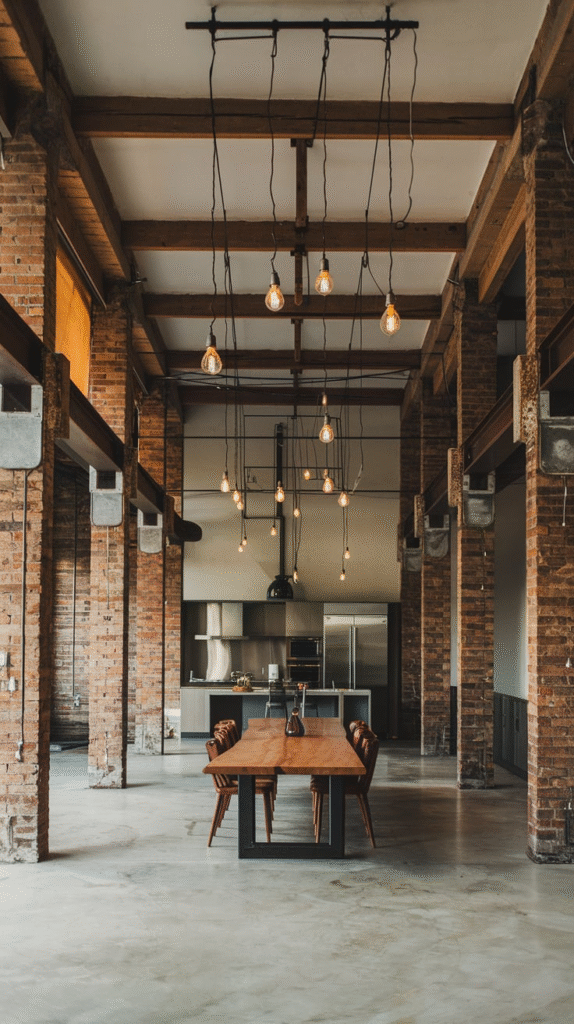
The kitchen is one area where industrial design shines. Stainless steel appliances are a must-have, giving the space that sleek, professional feel. Pair stainless steel with open shelving, concrete countertops, and metal bar stools for a truly industrial vibe.
Exposed pipes, vintage industrial lighting, and exposed brick can all contribute to the kitchen’s raw, unfinished charm. The industrial kitchen is all about functionality and form—practical, yet beautiful.
10. Vintage Industrial Furniture
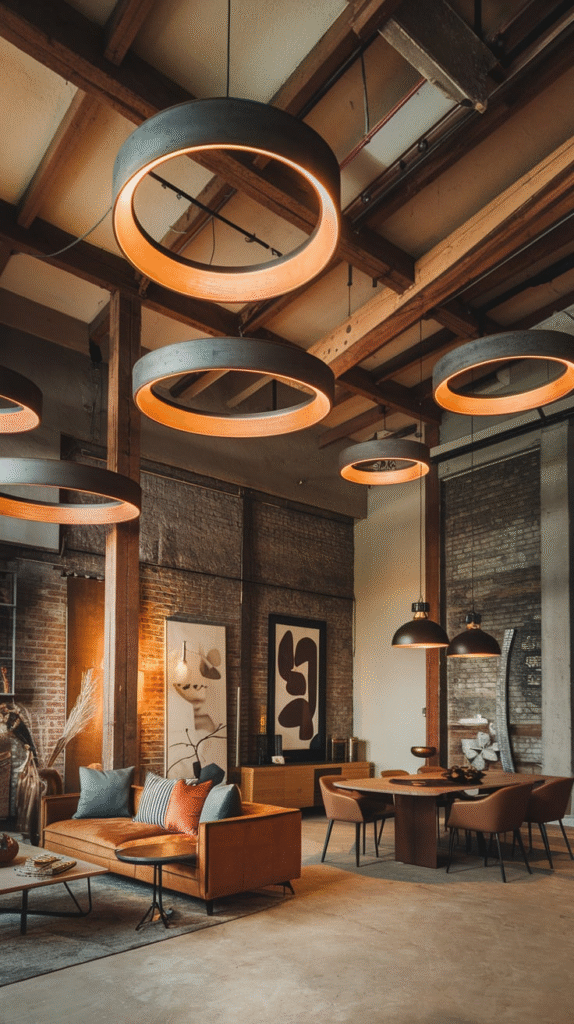
Vintage industrial furniture pieces help bring that timeworn, authentic feeling to your home. Look for metal chairs, leather couches, and wooden desks with visible age and character. Factory-style furniture often includes pieces that look like they’ve been pulled straight out of an old workshop.
Metal filing cabinets and industrial cart coffee tables are great examples. These pieces add history and charm to a modern home, allowing you to blend old and new seamlessly.
11. Industrial-inspired Bathrooms
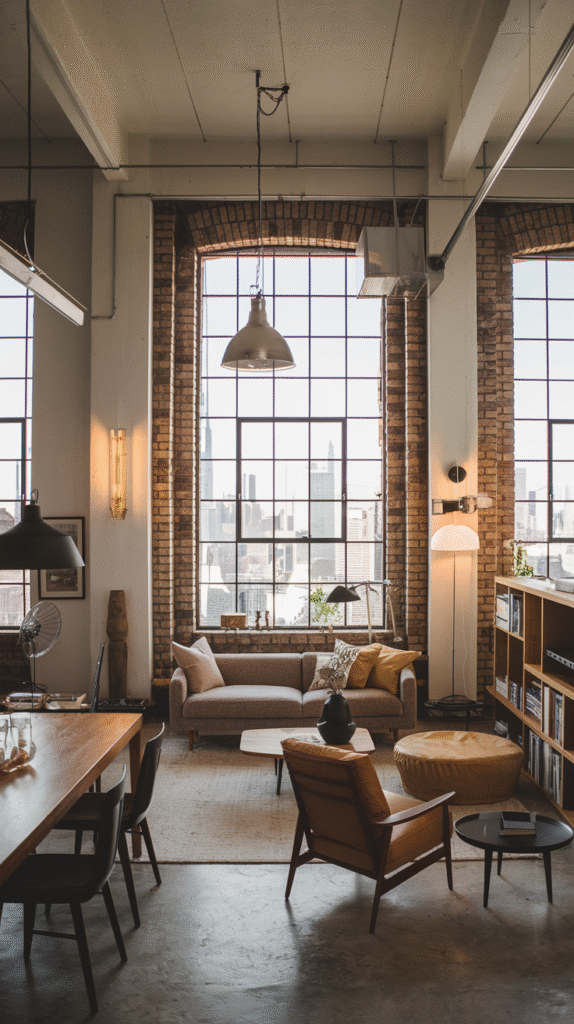
Industrial bathrooms often feature rough textures, metal, and minimalism. Instead of hiding plumbing and pipes, embrace them as a design feature. Consider exposed piping under your sink or a metal-framed shower. Concrete or stone floors paired with simple, sleek fixtures can give the bathroom a rugged feel. You can also incorporate vintage metal mirrors and industrial-style faucets to complete the look.
12. Incorporate Upcycled and Repurposed Items
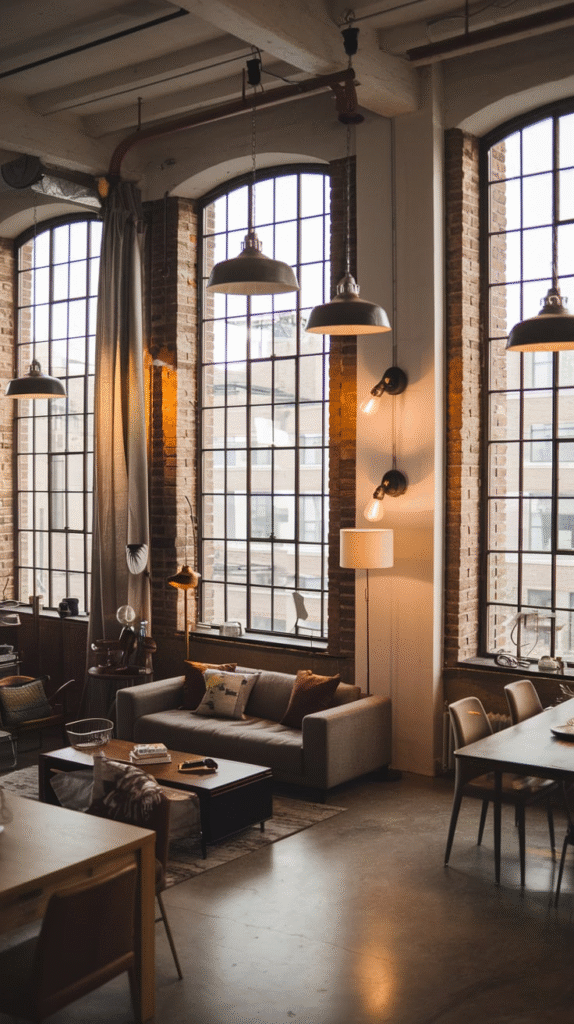
A key characteristic of industrial design is the idea of repurposing and upcycling. When decorating your industrial space, think about how old items can be reimagined. For instance, an old wooden crate can be turned into a coffee table or storage unit.
Vintage industrial stools can be reupholstered and used as seating in a dining area. Embrace the imperfections in these pieces—scratches, dents, and signs of wear all add to the character and authenticity of the space.
13. Incorporate Black and Gray Tones

Color palettes for industrial interiors are generally neutral and muted. Shades of black, gray, and white dominate the color scheme, with occasional splashes of warm wood tones to soften the effect. The darker hues create a moody, urban atmosphere that fits perfectly with the industrial style. To break up the monotony, you can add bold accents like a deep red or yellow in your furniture, artwork, or textiles.
14. Use of Industrial Materials in Unexpected Places
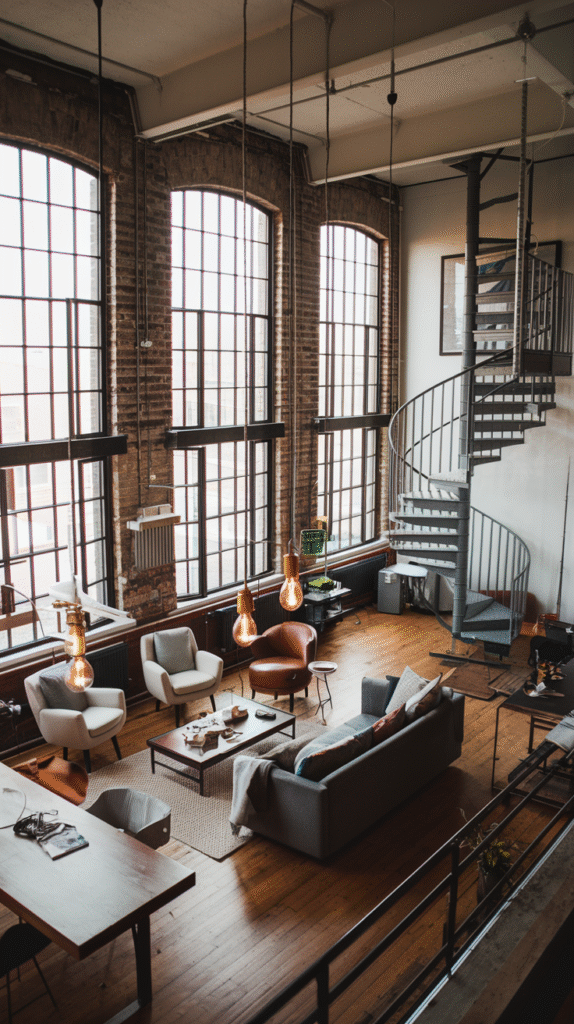
Industrial materials don’t have to be limited to obvious surfaces like walls and floors. Consider incorporating them into unexpected places. For example, metal mesh can be used as a partition or headboard. Concrete tiles in the bathroom can add an industrial edge, while steel brackets or metal rods can be incorporated into shelving units, lighting fixtures, or even as curtain rods.
15. Customizable Modular Furniture
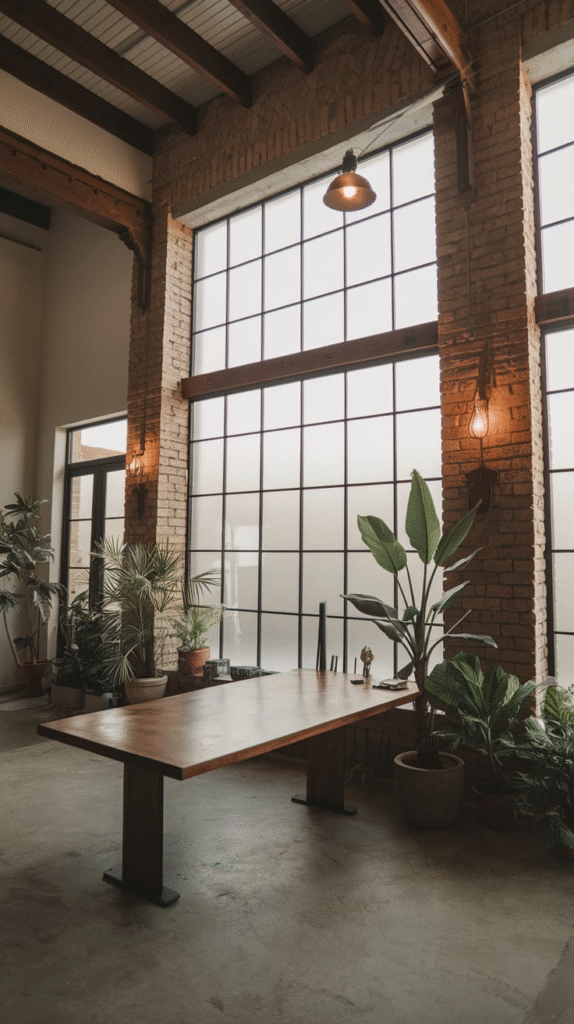
Industrial design often involves practicality and adaptability, which is where modular furniture comes in. Pieces like modular sofas, movable shelving units, or stackable crates can help you adjust the layout and functionality of your space as needed. Modular furniture pieces allow for flexibility in design and are great for smaller spaces that require customization.
16. Keep the Ceilings High

The beauty of industrial design lies in its spaciousness, and high ceilings play a significant role in achieving that open, airy feel. If you’re working with a smaller space, try to give the illusion of height with tall bookshelves, vertical lighting, or even wall-mounted shelving. Exposed beam ceilings or metal rafters are a quintessential feature of industrial spaces, adding to the charm and functionality of the room.
17. Use Industrial-style Doors
Industrial doors are a great way to elevate the industrial vibe in your home. Sliding barn doors, metal-framed glass doors, and vintage-style steel doors can act as both functional and stylish elements. They can be used for interior rooms or as a way to separate your living spaces from private areas, such as bedrooms or bathrooms.
18. Include Greenery to Soften the Space
Industrial spaces can sometimes feel a bit too stark or
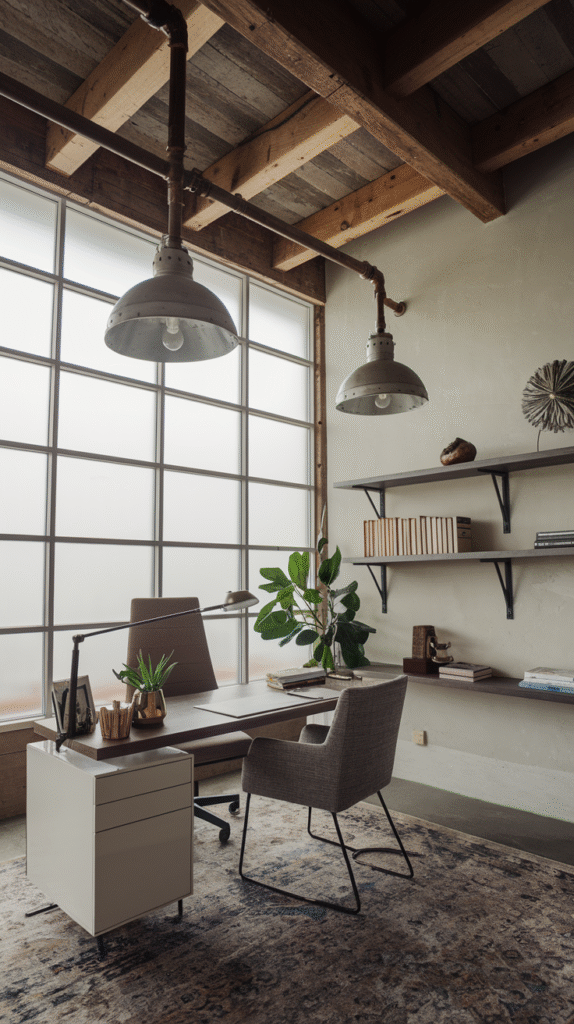
cold, which is why it’s essential to incorporate greenery to balance the hard edges. Indoor plants like succulents, ferns, and snake plants add life and color to a space. You can place plants in metal or concrete planters for that industrial look, or suspend them from the ceiling in metal hanging planters.
19. Reclaimed Wood Accents
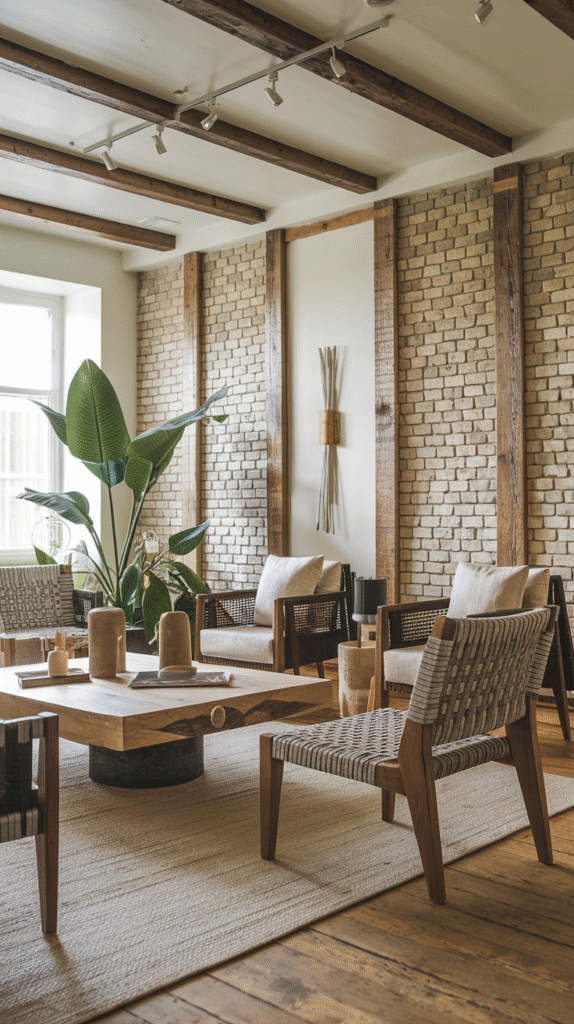
Reclaimed wood is one of the most sustainable ways to add charm and authenticity to an industrial space. It’s a material that’s both eco-friendly and full of character. You can use reclaimed wood for flooring, shelves, or even as a base for a dining table. The beauty of reclaimed wood is that it tells a story—it has a life beyond its original purpose, giving your space a sense of history and uniqueness.
20. Industrial-inspired Staircases
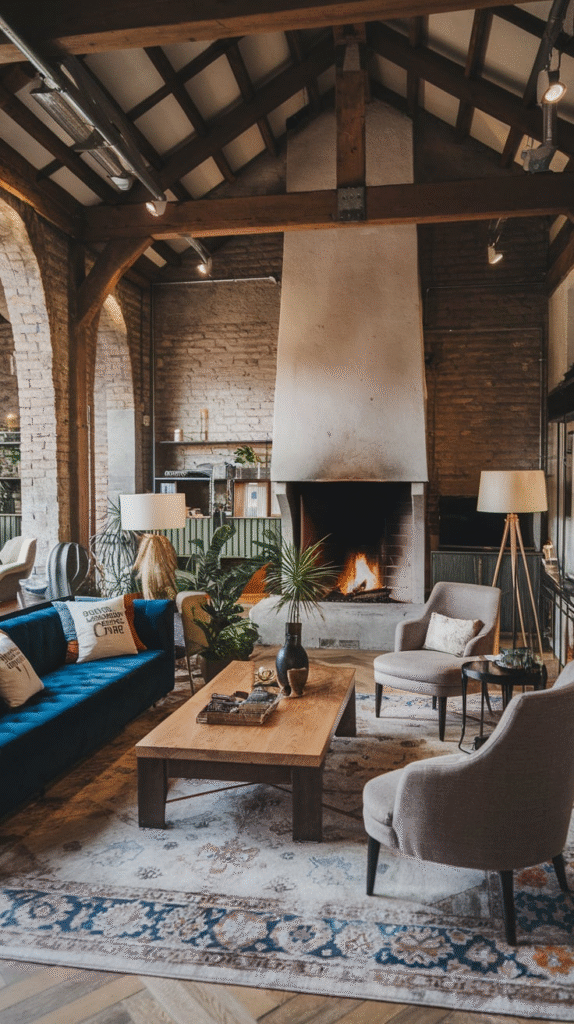
If your home has a staircase, consider incorporating industrial design elements into it. A metal staircase with a wooden tread can create a striking contrast between raw and refined. If you want to go for something more dramatic, consider using spiral metal staircases that are both functional and visually interesting. Adding steel railings or wire mesh panels to your staircase will complete the look.
21. Artistic Industrial Wall Treatments
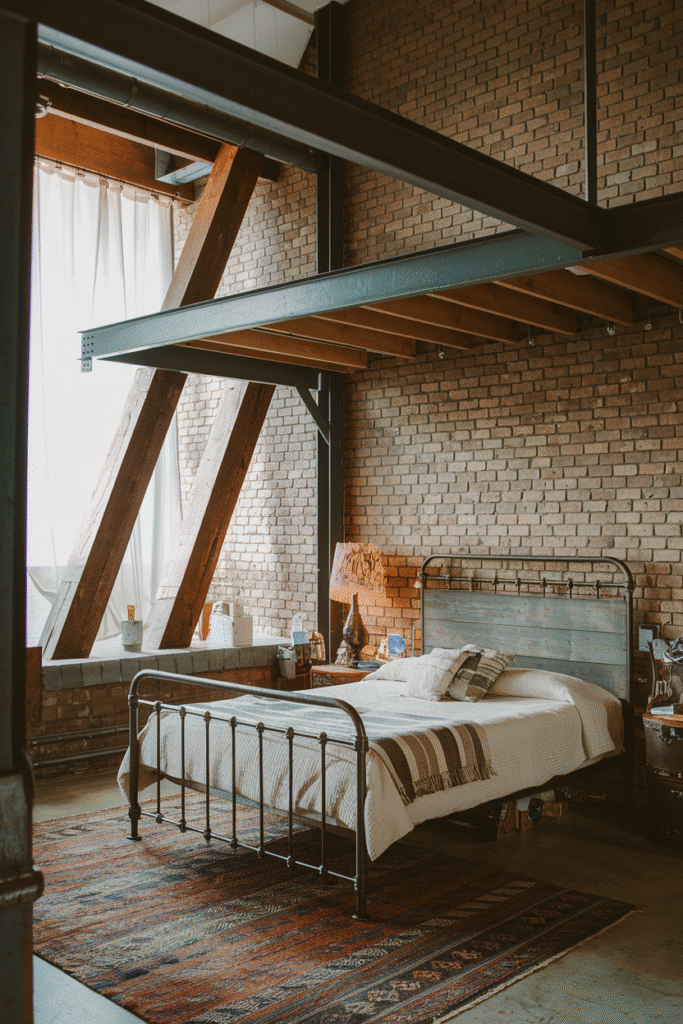
For an extra industrial touch, artistic wall treatments can help elevate your space. Metal wall panels, concrete wall finishes, and worn-out brick are all great ways to bring the industrial style into the room. Whether you opt for a full accent wall or small sections, these materials will give the room a unique, textured look that’s full of character.
Conclusion
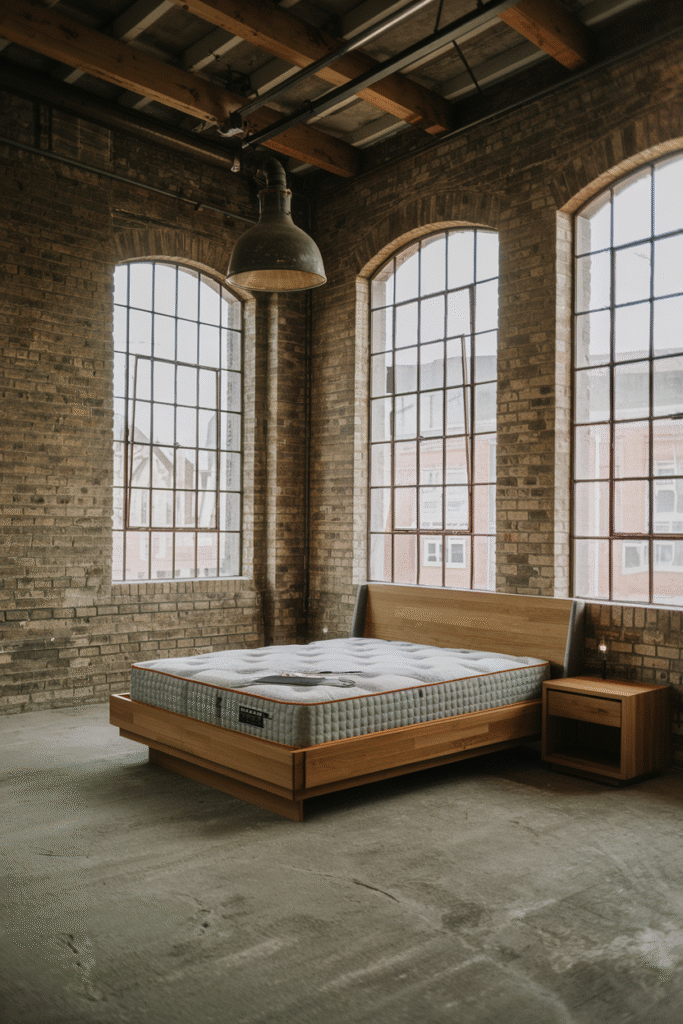
Industrial design is all about balancing the beauty of the old with the sleekness of the new. By using these 21 industrial interior design ideas, you can transform your home into a space that feels open, authentic, and full of character. Whether you’re working with a loft, a modern apartment, or a home with a more traditional feel, there’s an industrial design element that can fit your space. So go ahead—embrace the raw beauty and edgy elegance of industrial design, and let your space reflect your personality and style.
